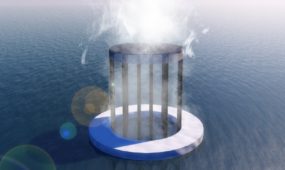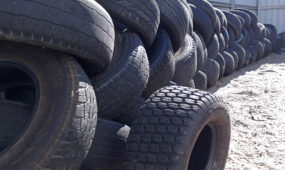Ocean super highways in the slow lane
Research & Development
SUPER highways in the oceans made famous by Finding Nemo are not the mass transporters of aquatic life they were once believed to be, researchers have found.

Sign up to receive notifications about new stories in this category.
Thank you for subscribing to story notifications.
Scientists from Flinders University in Adelaide, South Australia, have shown that currents along coasts with a wide continental shelf actually trap animals within their native regions.
Previously, it was thought that many marine animals used these currents as an ocean highway to travel long distances quickly as Nemo’s friends did along the East Australia Current (EAC) in the Disney classic.
The study found there was significantly less marine life connectivity or movement along these highways raising questions about potential impacts on the development of marine parks and fisheries.
Lead researcher Luciano Beheregaray from Flinders University’s Molecular Ecology Lab said Finding Nemo was a good analogy to describe the situation.
“We had actually proposed this study for the east coast of Australia when the movie was in theatres and thought although it had a stronger current to the southern coast, it would actually be a bit difficult for Nemo to have made it all the way to Sydney (from the Great Barrier Reef),” he said.
“If you don’t have more larvae coming to a region from elsewhere, and lose local populations because of fisheries or climate change, then you are not going to have those regions recolonised.”
The study suggests that creating multiple marine parks and protected areas relatively close to each other could help overcome the issue.
Professor Beheregaray, who was involved with establishing a network of 19 South Australian marine parks in 2012, said the network was a perfect example of how to protect its native species and its marine environment.
“Any larvae, like abalone, that comes out from the intertidal zone with a narrow shelf, can be carried across a large distance but in shallow regions it is not strong,” he said.
“A system of several protected areas close to one another would work better because it gives the larvae a chance to keep moving from place to place.”
mollusc
The study then compared the oceanographic simulations with realised connectivity based on genetic data from limpets collected along this coastal zone.
It found that larvae found in regions with a wide continental shelf such as Gulf St Vincent and Spencer Gulf, both in South Australia, were more likely to become trapped locally.
In fact they found that 80 per cent of the larvae at Gulf St Vincent and 68 per cent at Spencer Gulf remained in the region they were born.
However, regions with a narrow continental shelf such as eastern coast of Tasmania only had 11 per cent remain in their native region.
Professor Beheregaray said these results could be similar in other areas of the world with a wide shelf.
The study titled Oceanography promotes self-recruitment in a planktonic larval disperser was published in the Nature journal Scientific Reports and was funded by a Discovery Grant from the Australian Research Council (ARC).
South Australia’s capital Adelaide has three long-standing public universities, Flinders University, University of South Australia and the University of Adelaide, each of which are consistently rated highly in the international higher education rankings.
Jump to next article



